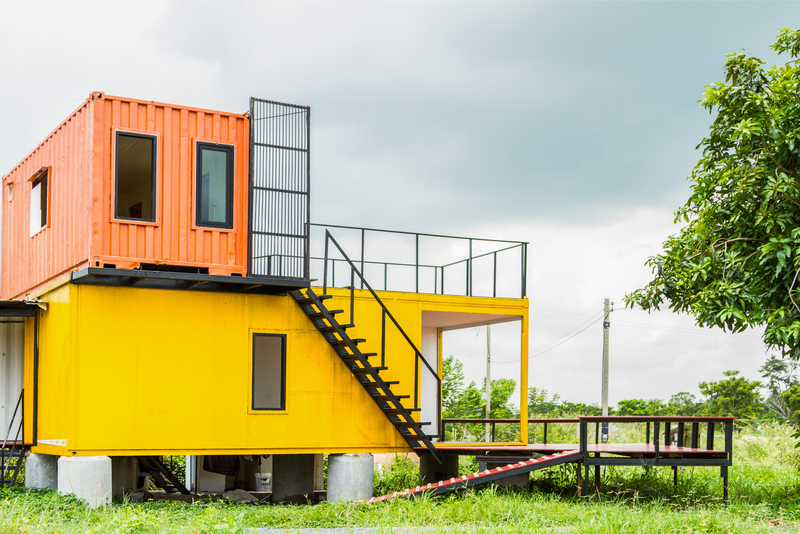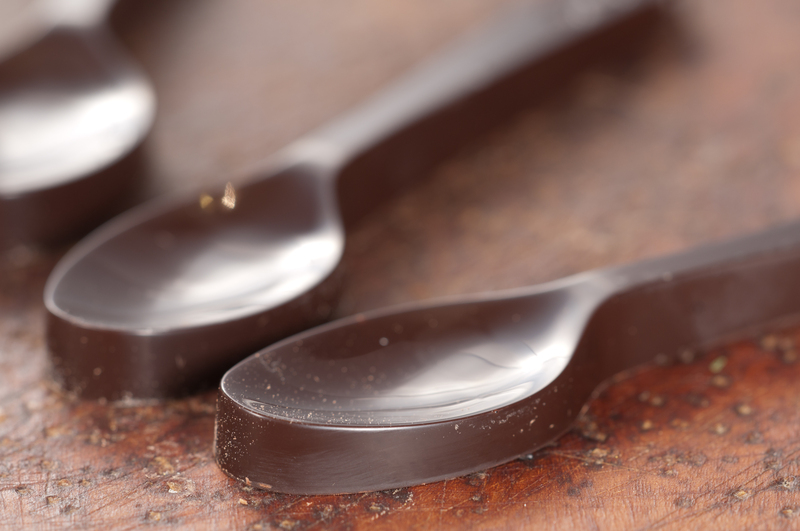What to Do with Damaged Pots and Pans: Sustainable Solutions for Old Cookware
Are you staring at scratched nonstick skillets, warped frying pans, or rusty saucepans and wondering what to do with damaged pots and pans? Instead of tossing these kitchen castoffs in the trash, there are several eco-friendly, creative, and practical options for giving your old cookware a new lease on life. In this guide, we'll explore the best ways to recycle, upcycle, donate, or responsibly dispose of damaged pans and pots. Let's reduce waste, protect the environment, and maybe even add some flair to your home or garden at the same time!
Recognizing When Pots and Pans Are Truly Damaged
Before you decide what to do with old pots and pans, it's crucial to assess their condition. Some damage might be cosmetic and easy to fix, while other types may render the cookware unsafe for use. Here are common signs it's time to replace your pots and pans:
- Severely scratched or peeling nonstick coating (can release harmful substances into food)
- Visible rust or corrosion on metal surfaces
- Warps or dents that affect heating or stability
- Loose or broken handles and lids
- Chipped enamel on cast iron or enameled steel cookware
If your cookware displays any of these issues, it's time to think about replacement. But don't worry--your cookware can still serve a purpose in its next life!

Eco-Friendly Ways to Dispose of or Reuse Damaged Pots and Pans
Let's dive into creative and environmentally responsible ways to get rid of damaged pots and pans, ensuring minimal impact on landfills.
1. Recycle Metal Pots and Pans
Most pots and pans are made from materials like stainless steel, aluminum, and cast iron--all of which are recyclable. Here's how you can recycle your damaged cookware effectively:
- Identify your cookware material: Check if it's stainless steel, aluminum, copper, or cast iron.
- Remove non-metal parts: Before recycling, remove plastic, rubber, or wooden handles and lids.
- Contact your local recycling center: Ask if they accept cookware and what preparations are needed.
- Check for scrap metal yards: These often accept damaged pots, pans, and even lids for recycling.
- Don't recycle cookware with a nonstick coating (Teflon), unless your center explicitly accepts it, as this coating can contaminate recyclables.
Tip: Some cookware retailers offer trade-in or recycling programs for old pots and pans. Ask your local kitchenware store for options.
2. Donate Usable Cookware
If your pots and pans are still functional but just a little worn or mismatched, consider donating them:
- Thrift stores and charity shops: Donate usable, clean cookware.
- Homeless shelters or transitional housing organizations: Many need basic kitchen equipment.
- Community centers, schools, or churches: May accept functional cookware for kitchens or crafts.
Even minor cosmetic damage is often acceptable, as long as the cookware is safe to use and clean.
3. Upcycle Old Pots and Pans for Home and Garden
Get creative by repurposing damaged pots and pans into functional or decorative items. Here are some fun ideas:
- Planters for indoor or outdoor gardens: Old pots make excellent containers for herbs, flowers, or succulents. Just add drainage as needed.
- Hanging baskets or wall art: Paint and mount pans for quirky garden or kitchen decor.
- Bird baths or feeders: A large frying pan can become the base for a sustainable bird bath.
- Organizers: Use saucepans to hold office supplies, craft materials, or small tools.
- Clocks: Turn a funky frying pan into a unique wall clock with inexpensive clock kit inserts.
Let your imagination run wild--repurposed cookware can be both practical and stylish!
Responsible Disposal of Pots and Pans That Can't Be Recycled
Sometimes, especially with nonstick or ceramic-coated cookware, recycling isn't an option. Here's what to do with damaged pots and pans in that case:
- Check hazardous waste centers: Some centers or community collection events accept nonstick cookware, as the Teflon coating may be considered hazardous.
- Contact your local landfill or municipality: Ask about bulk waste pick-up or special disposal instructions for old pots and pans.
- Mail-back recycling programs: Some specialty recycling companies accept cookware by mail for a fee--search online for local options.
Always avoid putting non-recyclable cookware in your curbside recycling bin, as this contaminates the recycling stream.
Repairing and Refurbishing Pots and Pans
Before getting rid of your damaged cookware, consider whether it can be repaired or refurbished for further use:
- Tighten or replace loose handles: Many brands sell replacement handles, or you can repair with hardware store parts.
- Remove rust from cast iron: Scrub with steel wool, then re-season the pan.
- Polish and clean stainless steel: Use stainless steel cleaners or natural mixtures of baking soda and vinegar.
- Re-season worn nonstick or cast iron cookware: Sometimes, a fresh season can restore function (not for peeling Teflon, though).
If the problem is minor, you may get many more years from your pots and pans with simple repairs!
How to Prolong the Life of Your Pots and Pans
To reduce the frequency of damaged cookware and save money over time, follow these essential cookware care tips:
- Always use the right utensils: Avoid metal utensils on nonstick surfaces.
- Hand wash when possible: Prolongs coating and finish, especially for nonstick and cast iron pans.
- Dry thoroughly to prevent rust, particularly for cast iron or carbon steel.
- Store cookware properly, avoiding stacking heavy items on delicate pans.
- Follow manufacturer's instructions for cleaning and seasoning.
Proper care helps delay the moment you need to figure out what to do with old pots and pans!
Creative Projects Using Damaged Pots and Pans
Unique Planters for Your Green Space
Turn a damaged saucepan or frying pan into a whimsical planter for your garden or balcony. Simply add a layer of small rocks to the bottom for drainage, fill with potting soil, and plant your favorite herbs or flowers. You can even paint the exterior for a personalized touch.
Charming Birdbaths and Feeders
A shallow old pan can become a charming birdbath. Hang or mount it at bird height, fill with water, and enjoy watching feathered friends flock to your yard. For feeders, fill a pan with birdseed and suspend it from a tree branch.
Home Organizers and Storage Solutions
Broken pots and pans make excellent organizers. Mount a frying pan to the wall as a magnetic board for keys, or use a deep saucepan on a desk to corral office supplies. Old lids can find second life as trivets or coasters.
Kids' Crafts and DIY Projects
Old cookware is a safe and reusable base for a variety of kids' crafts. Let them create painted wall hangings, musical instruments (like a "pan-drum"), or prop pieces for imaginative play.

Frequently Asked Questions about Damaged Pots and Pans
Can nonstick pans be recycled?
Generally, most curbside recycling does not accept nonstick cookware due to the Teflon coating. However, some specialty recyclers, scrap yards (after stripping the coating and non-metal components), or manufacturer take-back programs may accept them. Check with your local facilities or search online for cookware recycling options in your area.
Where can I donate old pots and pans?
You can donate gently used cookware to charity thrift stores, food banks, shelters, or community kitchens. Always confirm with the organization in advance to ensure they accept kitchenware donations.
Are rusty pots and pans safe to use?
Rust on cast iron can usually be removed and the pan re-seasoned, making it safe for use. However, rust on other materials, especially if deep or extensive, can compromise cookware's integrity and safety and should be avoided.
Is it safe to cook with scratched nonstick pans?
No. Once the nonstick surface is scratched or peeling, chemicals can leach into your food and release toxic fumes during cooking. It's best to stop using nonstick pans with significant scratches and replace or repurpose them.
How do I prepare cookware for recycling?
Remove all non-metal parts such as plastic handles or silicone lids. Clean off food residues and separate metals if possible. Some recycling centers may request that items be sorted by metal type (e.g., steel vs. aluminum)--check local guidelines.
Can I put pots and pans in the trash?
While you can, it's not environmentally friendly. Before tossing damaged kitchenware in the trash, always try to recycle, donate, or upcycle. Many metals are valuable and easily processed for reuse.
Conclusion: Mindful Solutions for Damaged Pots and Pans
Knowing what to do with damaged pots and pans can turn an environmental challenge into a rewarding opportunity. Whether you decide to recycle, donate, upcycle, or repair your old cookware, you're contributing to a cleaner planet and discovering inventive new uses for household items. Next time you're ready to retire that wobbly saucepan or scratched frying pan, revisit these ideas and give your pots and pans the second life they deserve.
Remember: Even damaged kitchenware can make a positive impact when handled thoughtfully. Your actions help promote a circular economy, support local communities, and inspire creative living. Happy repurposing!